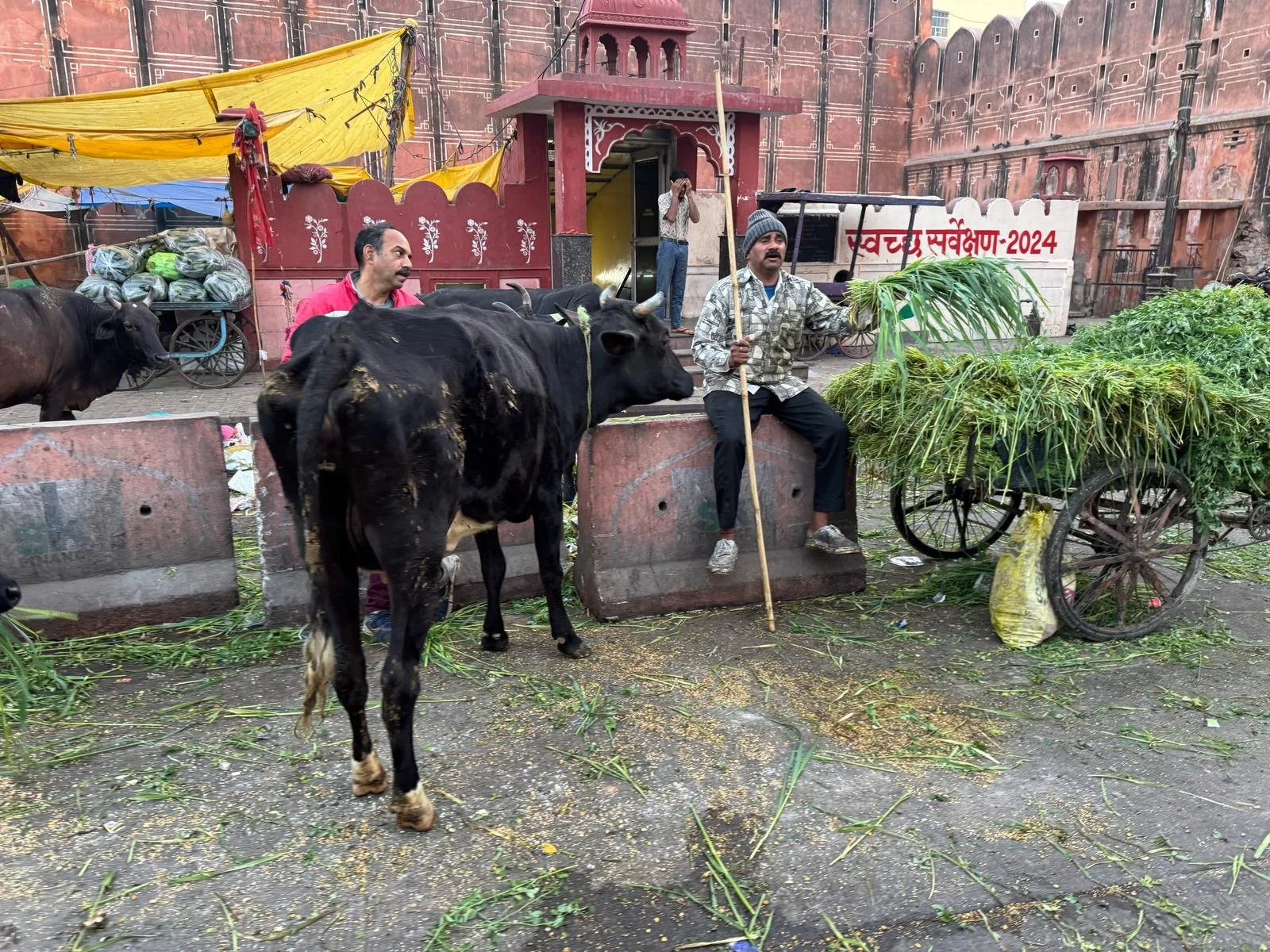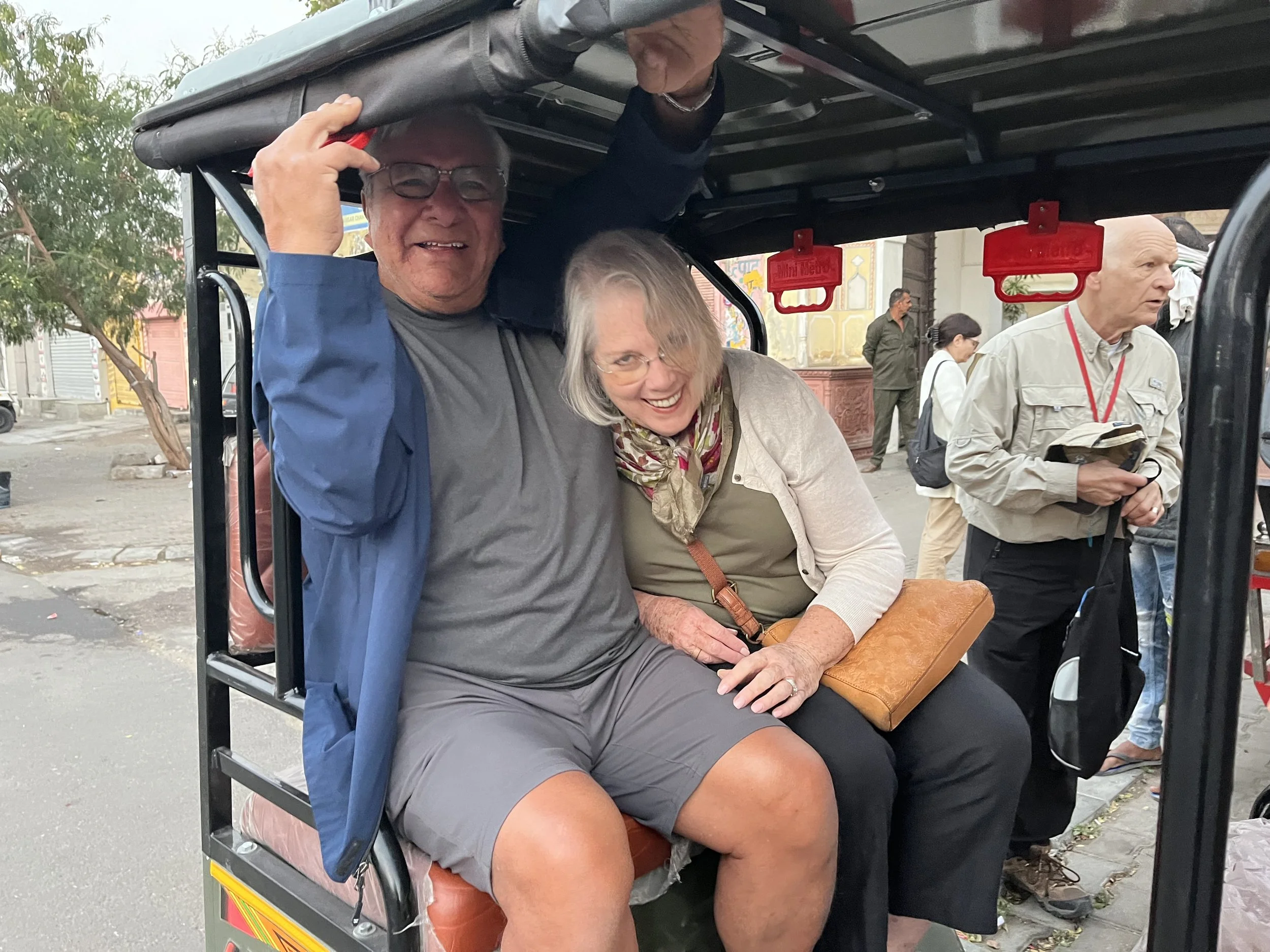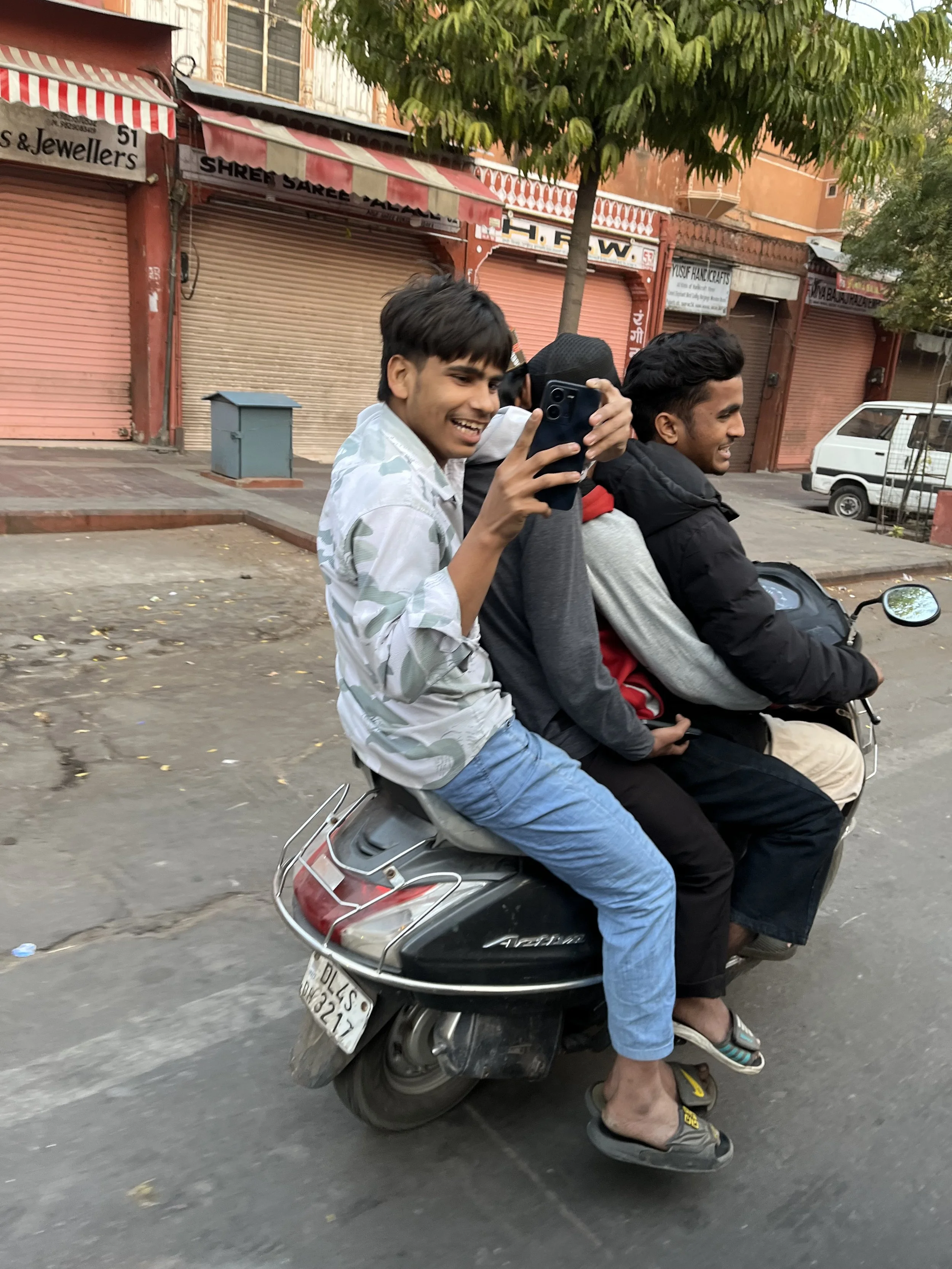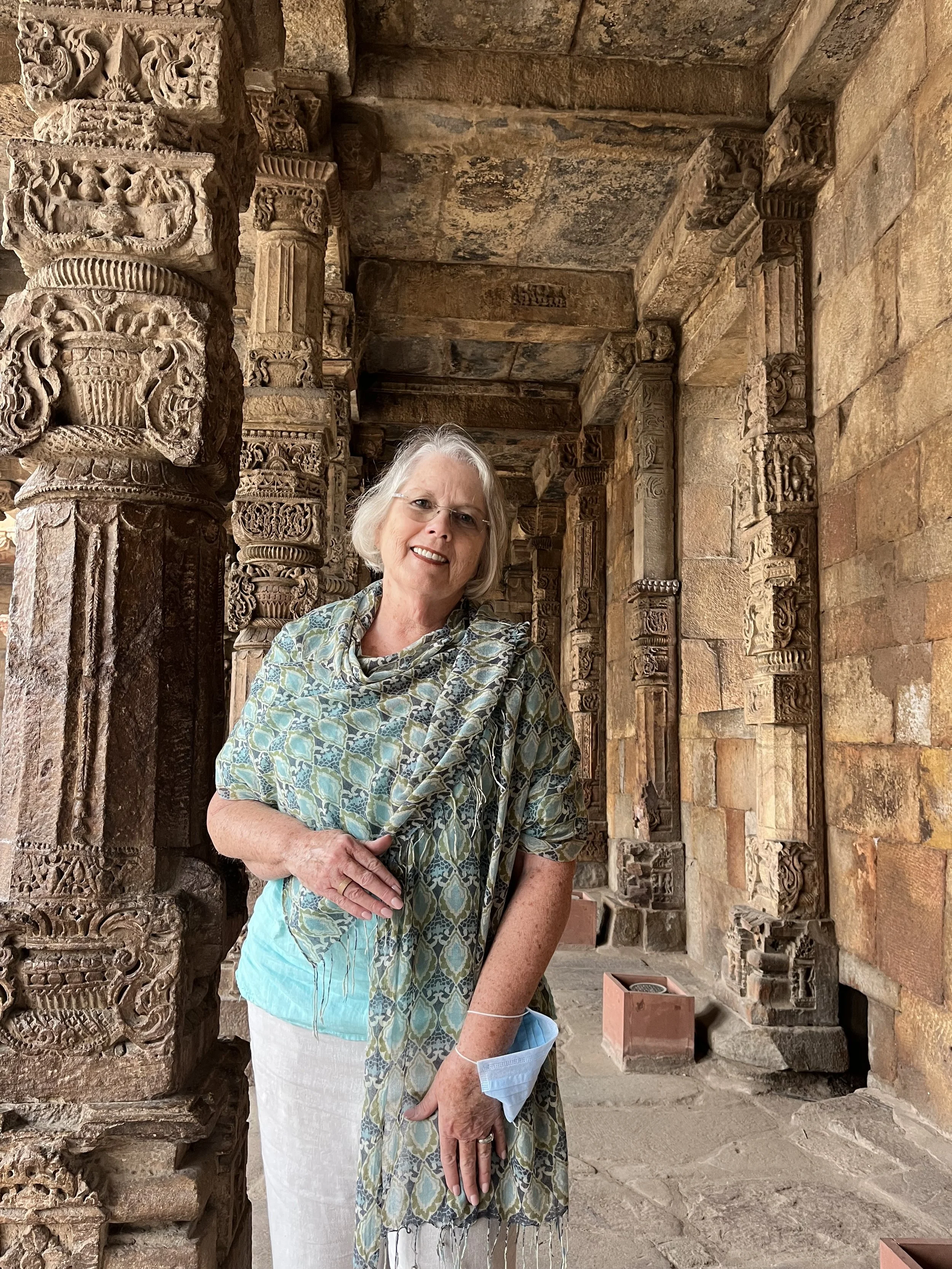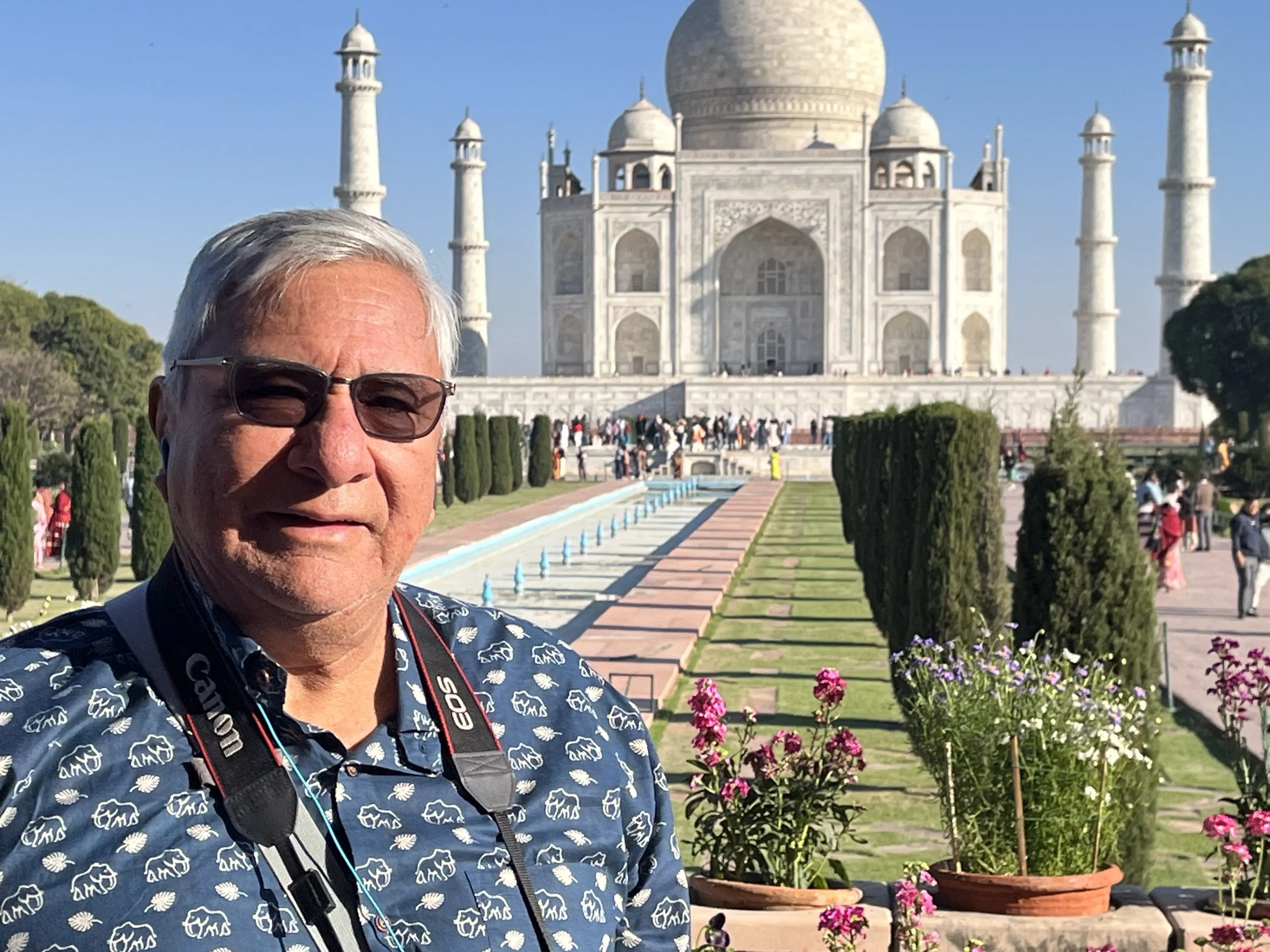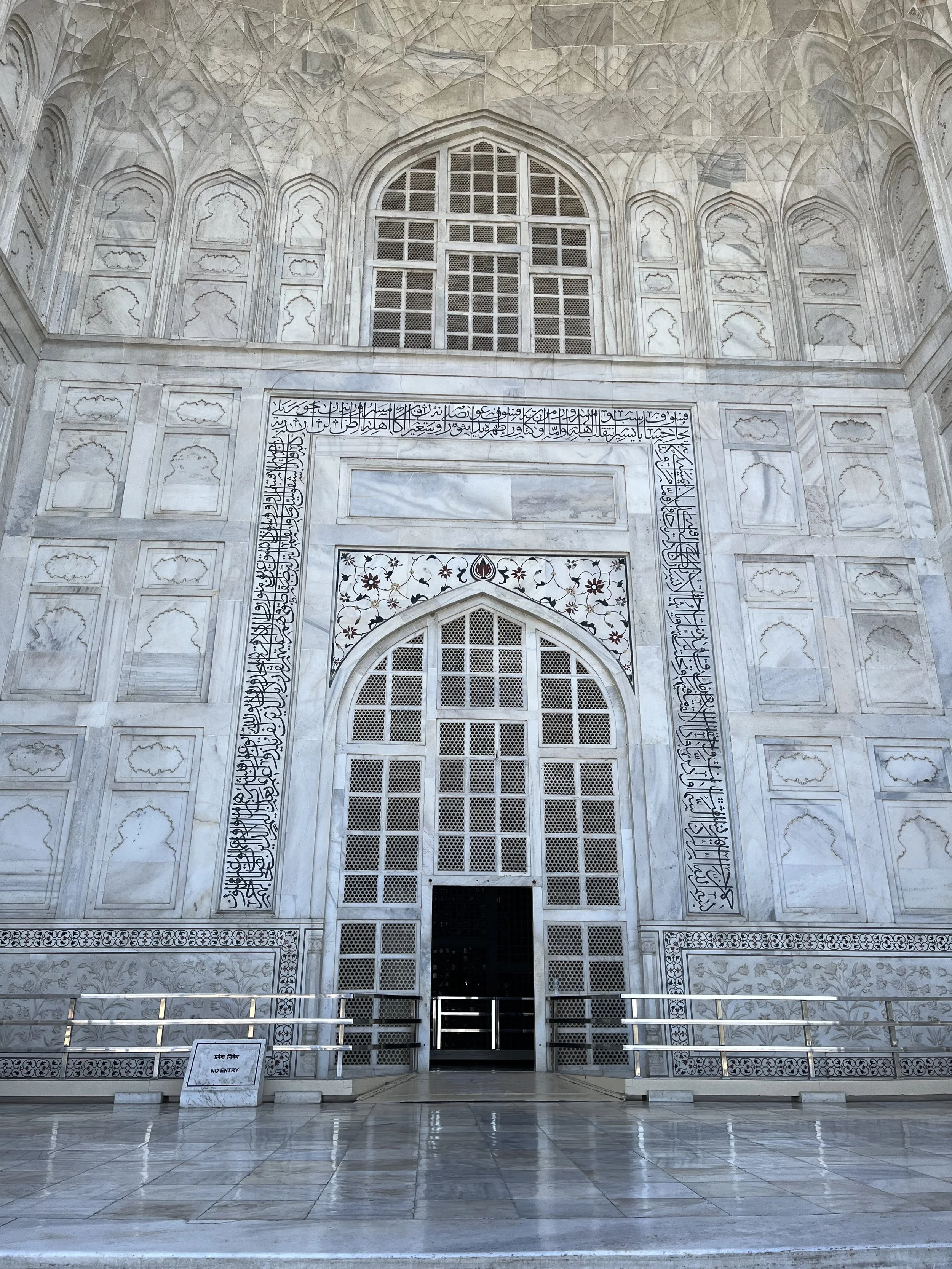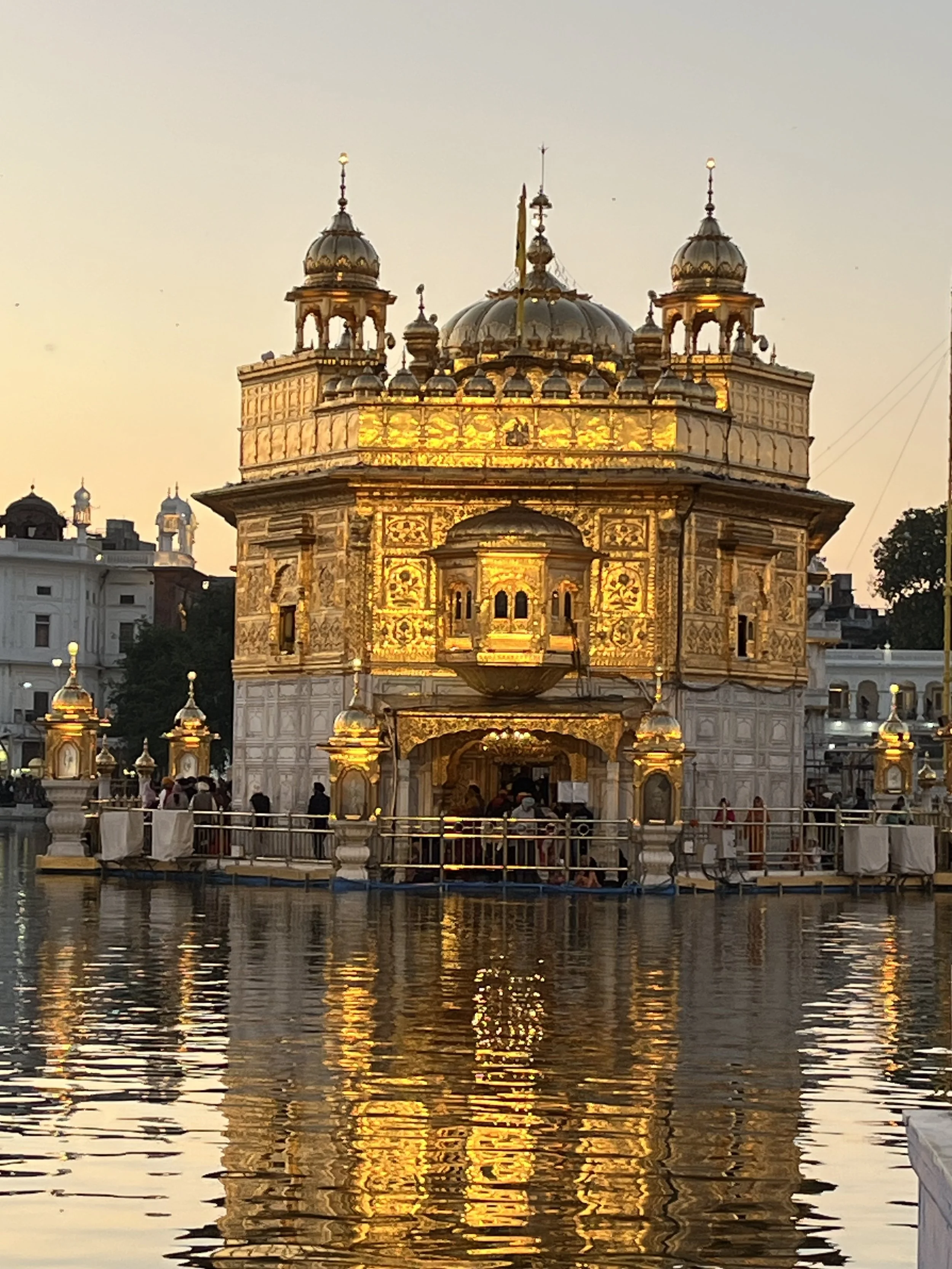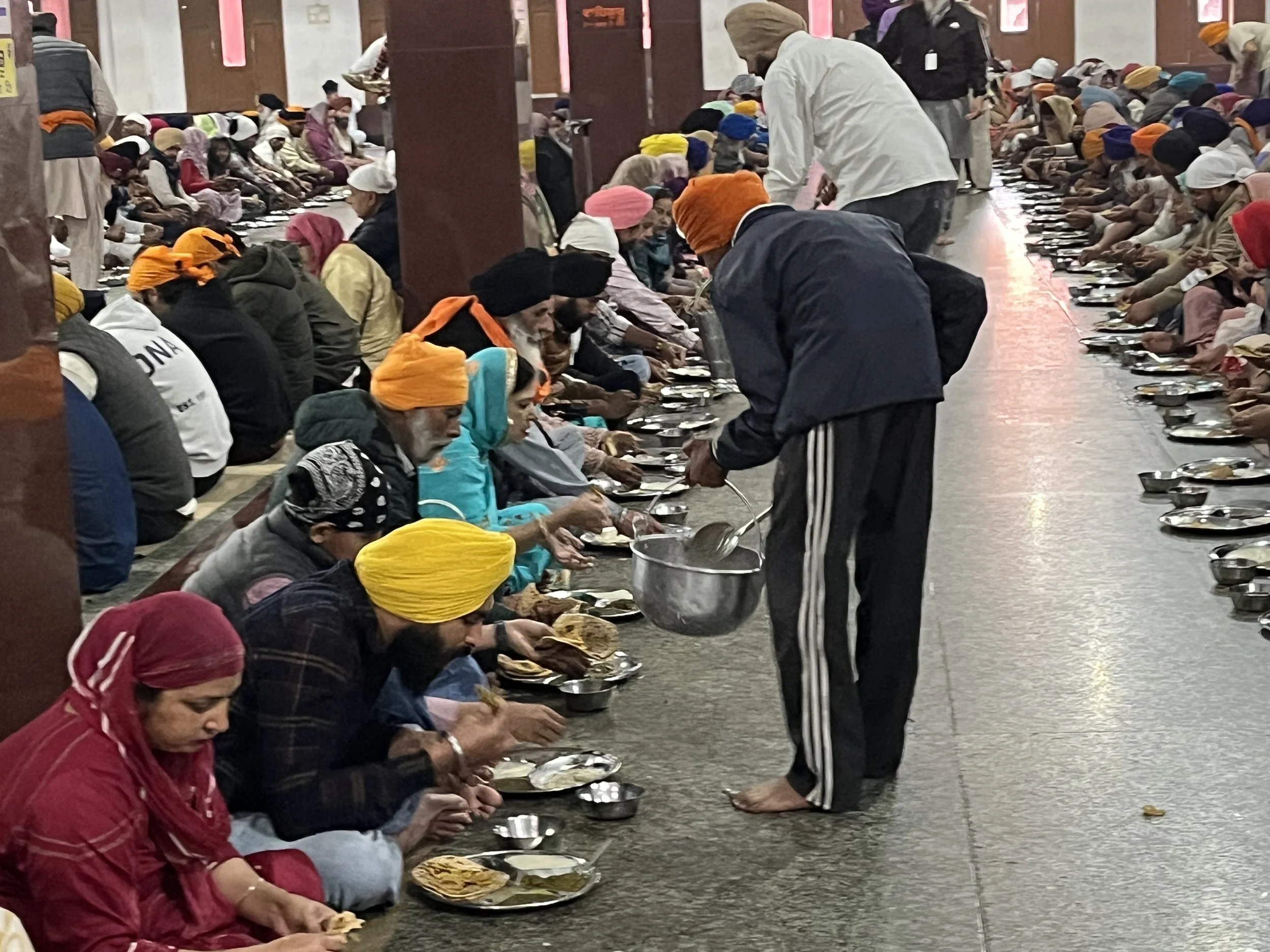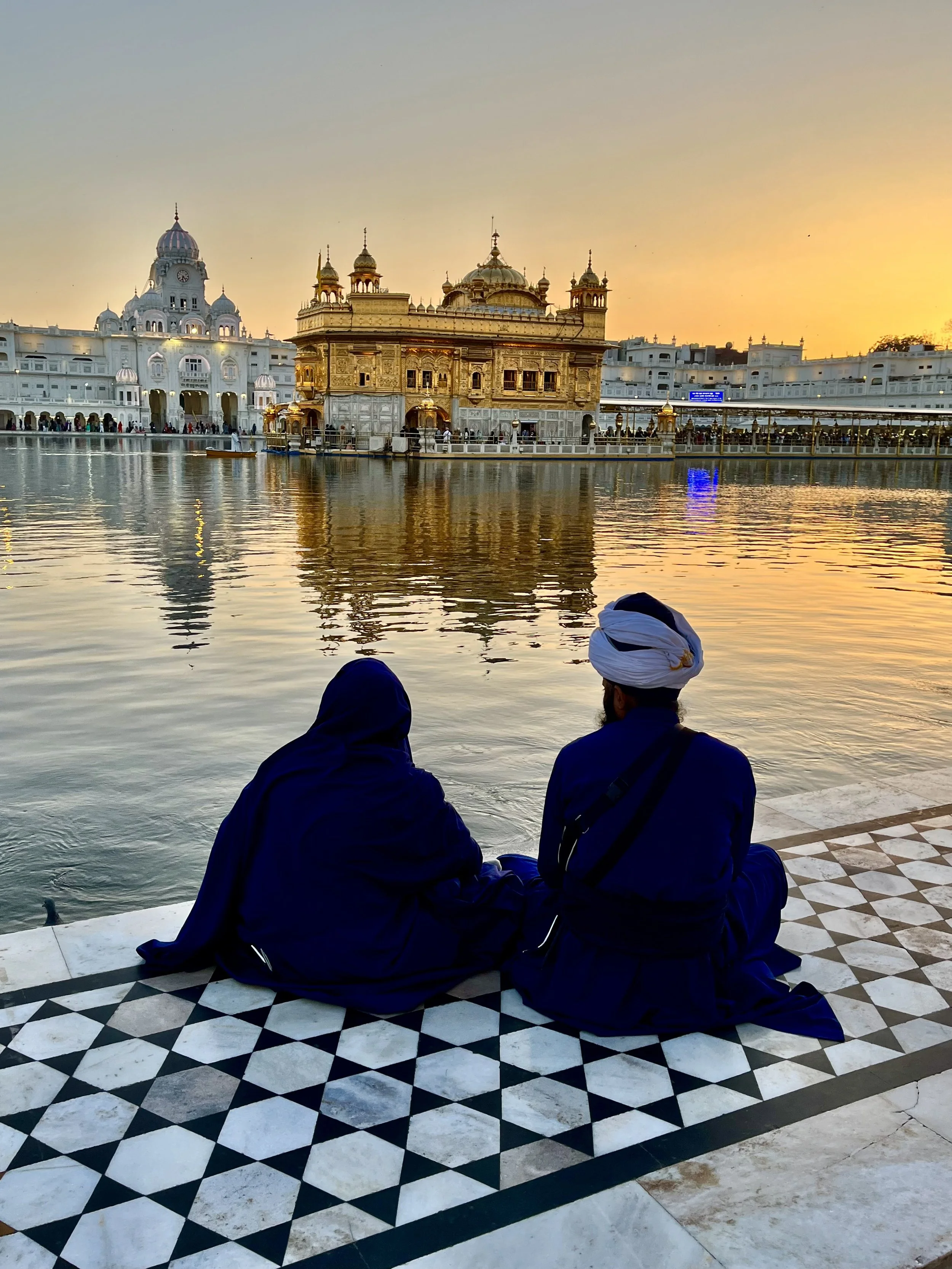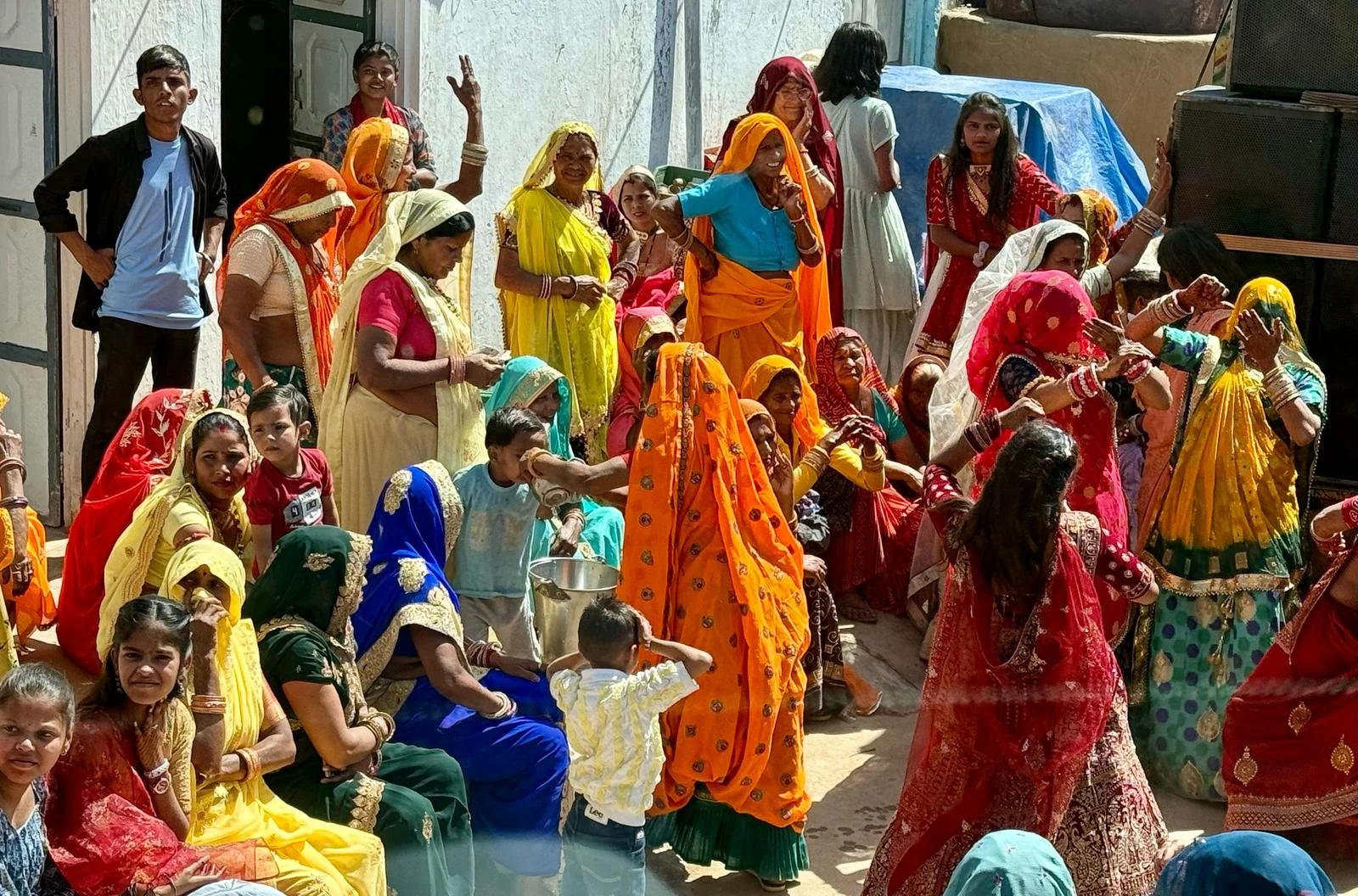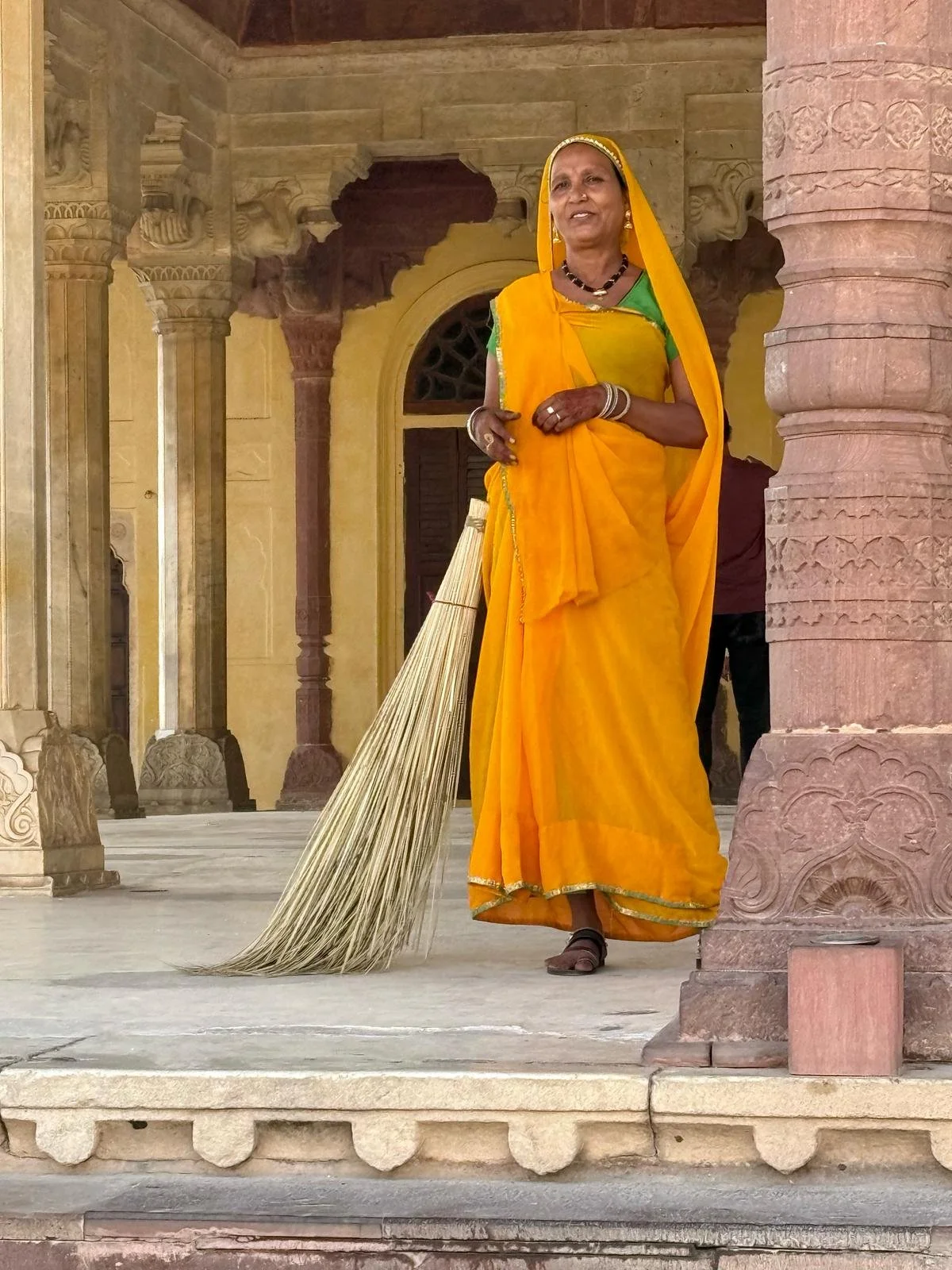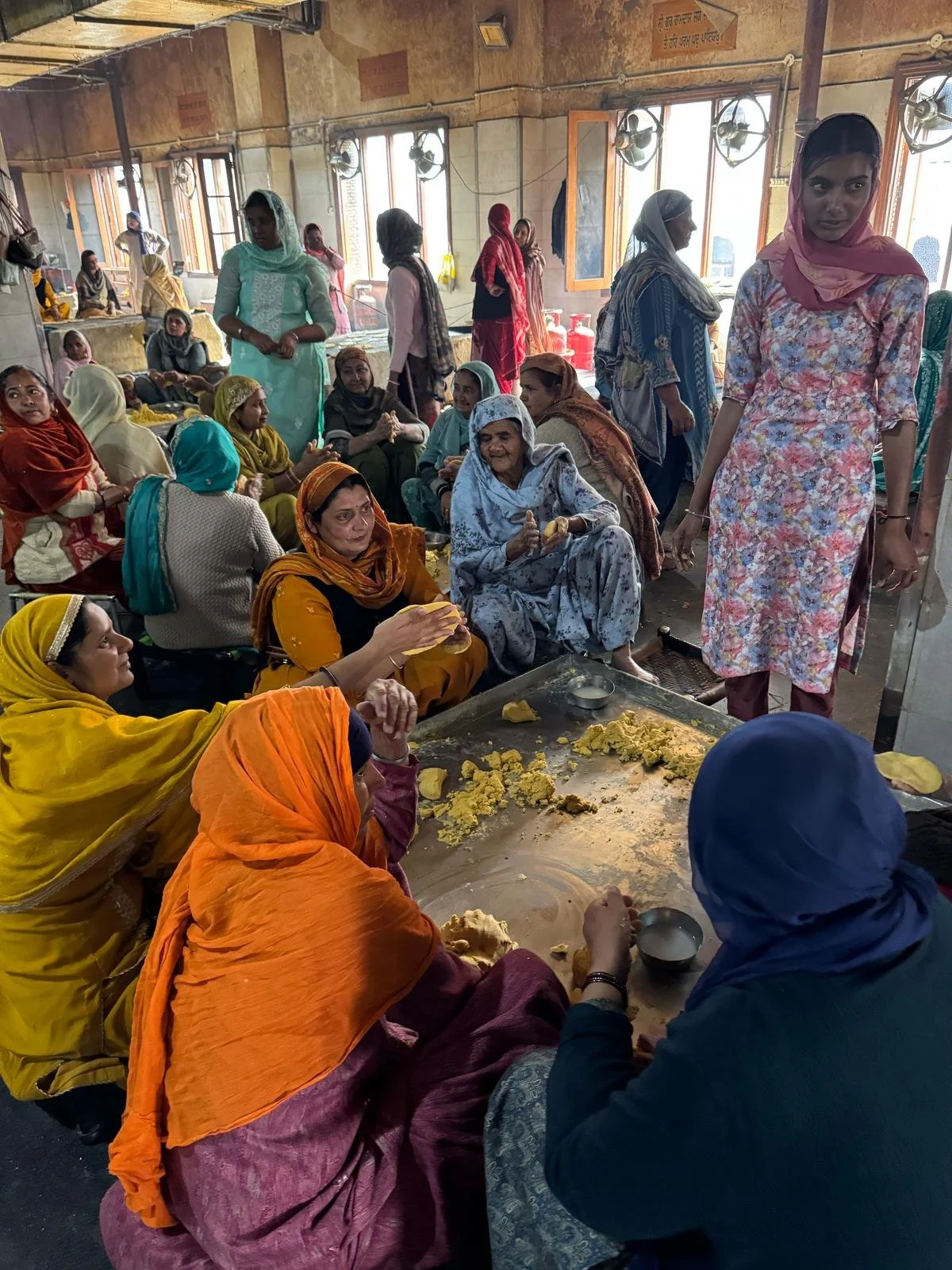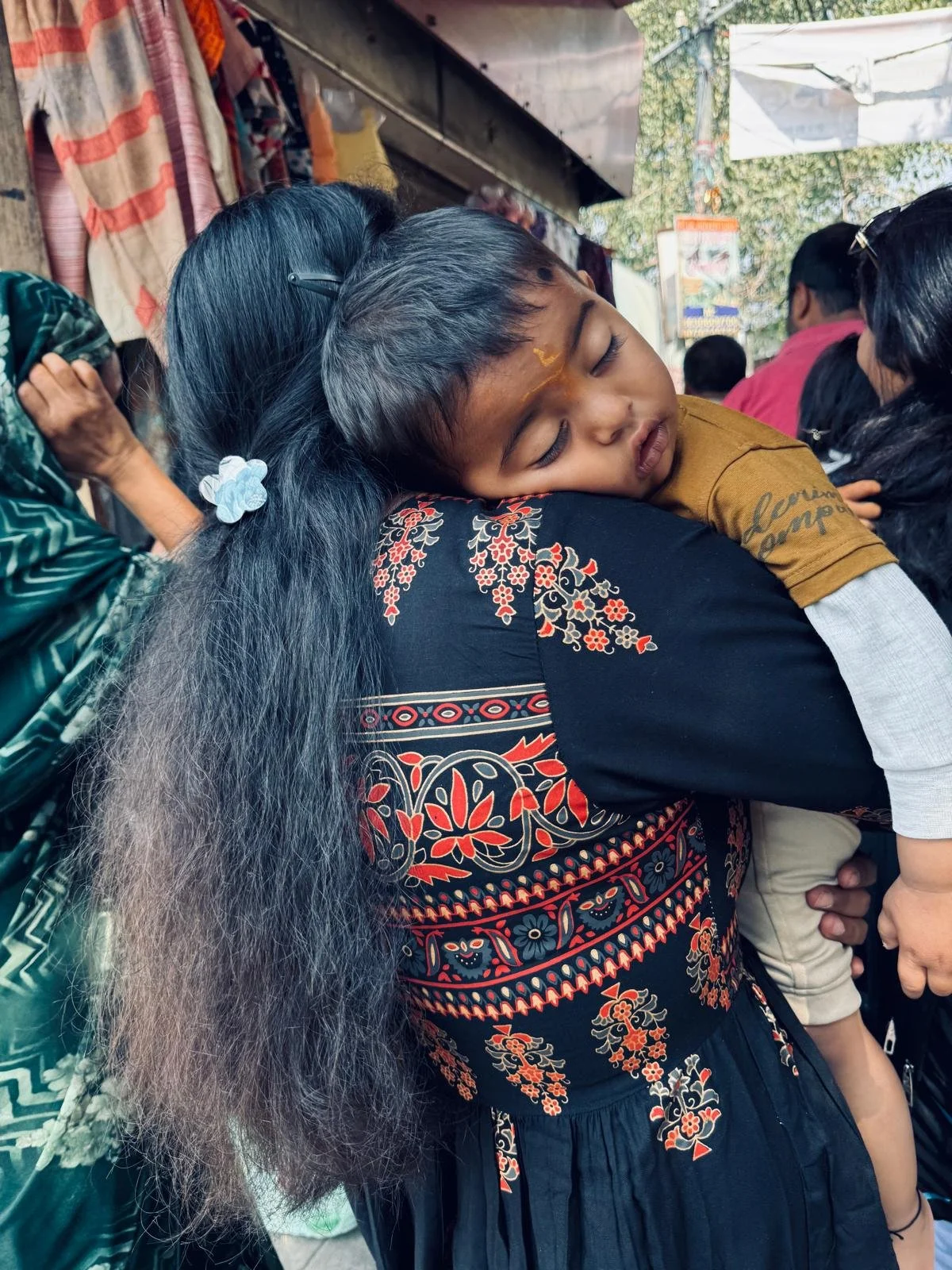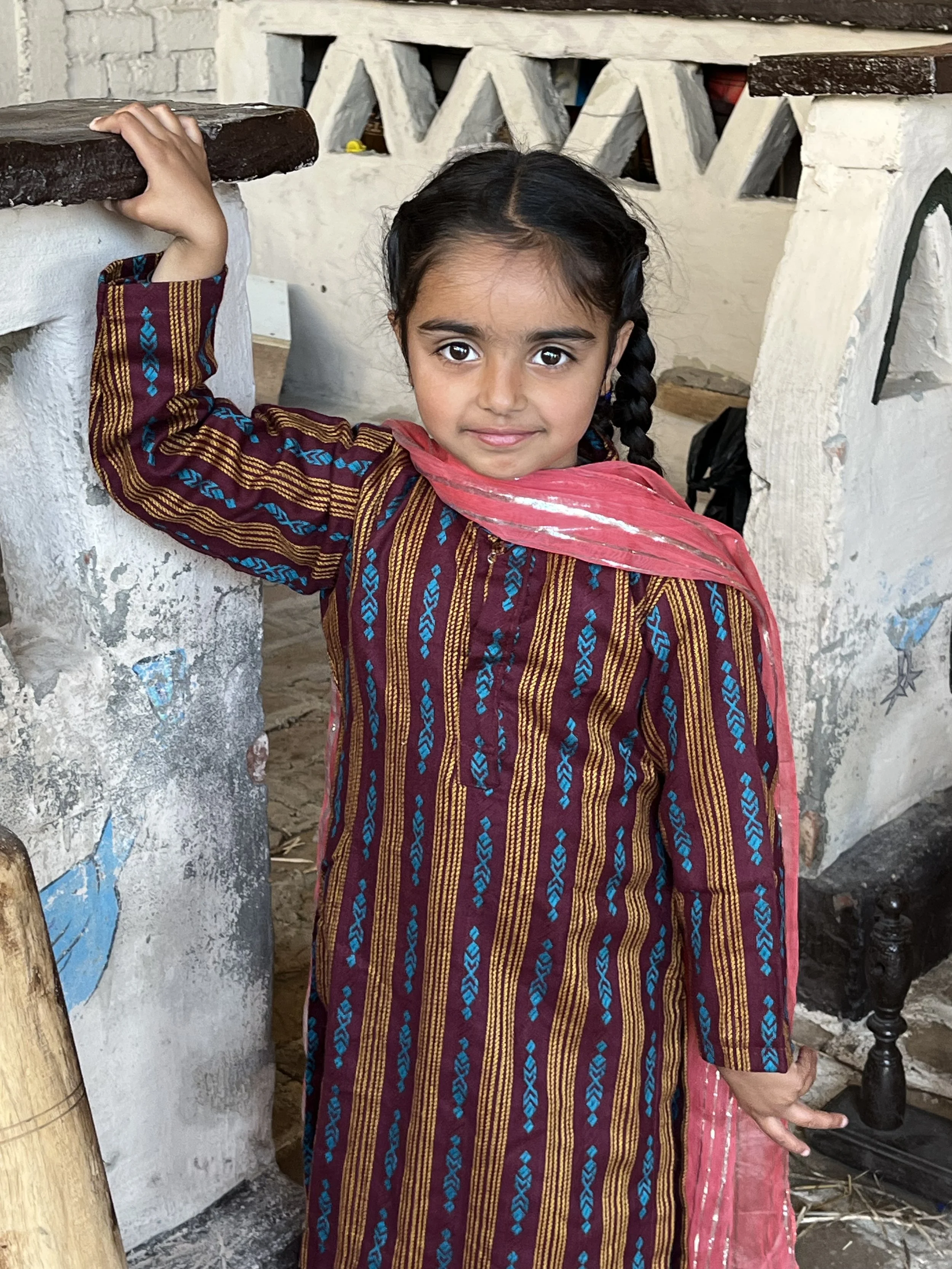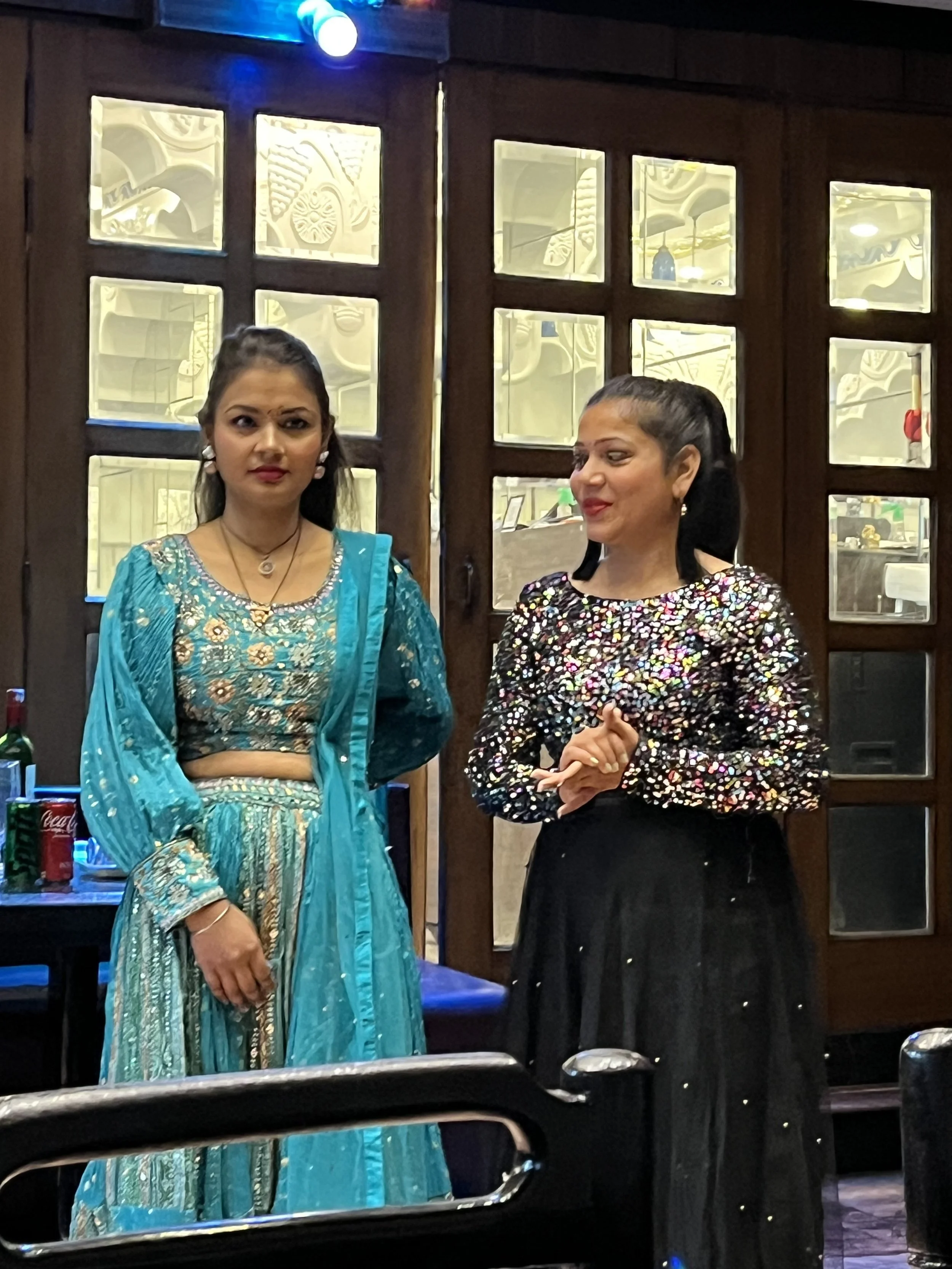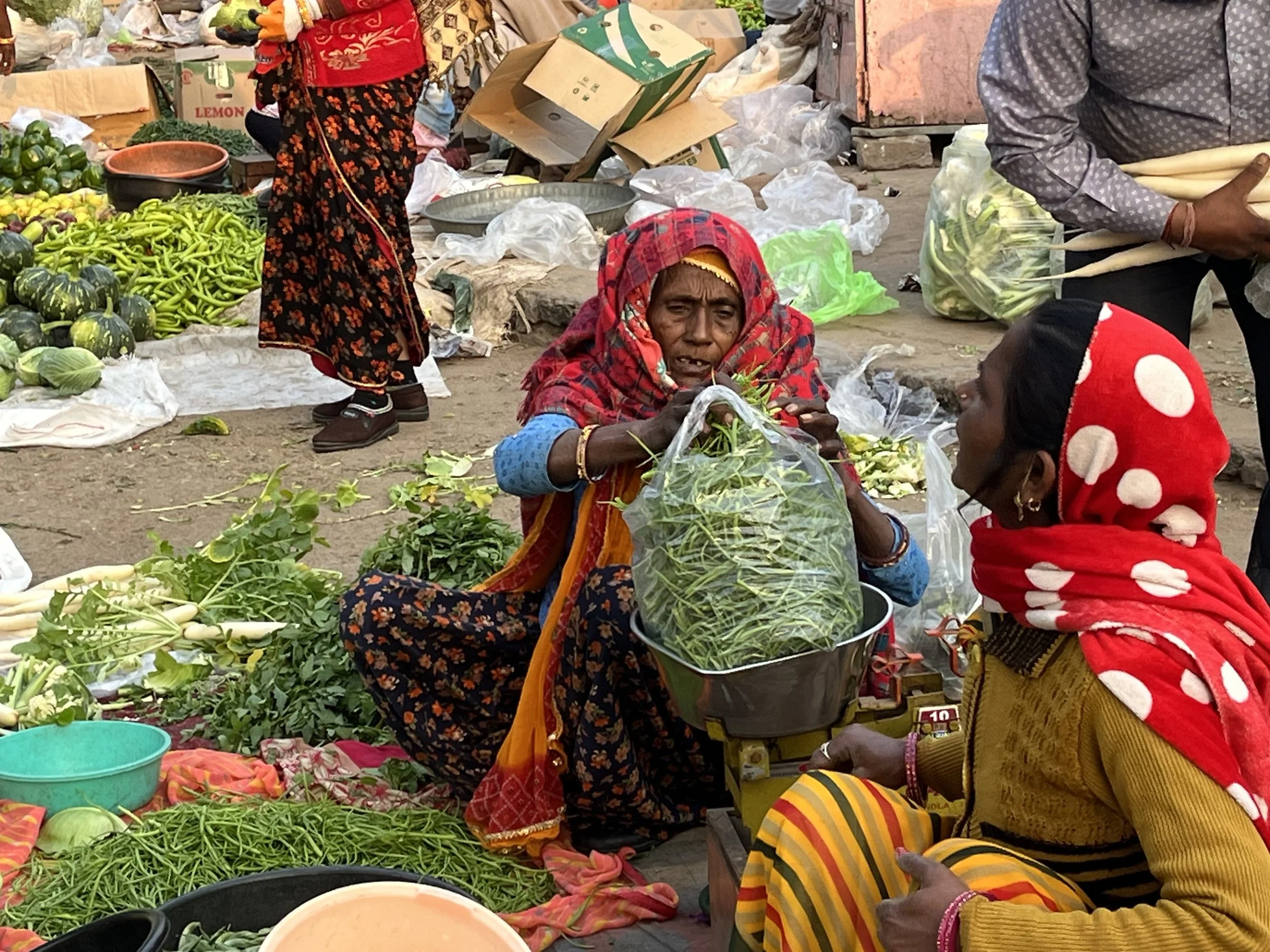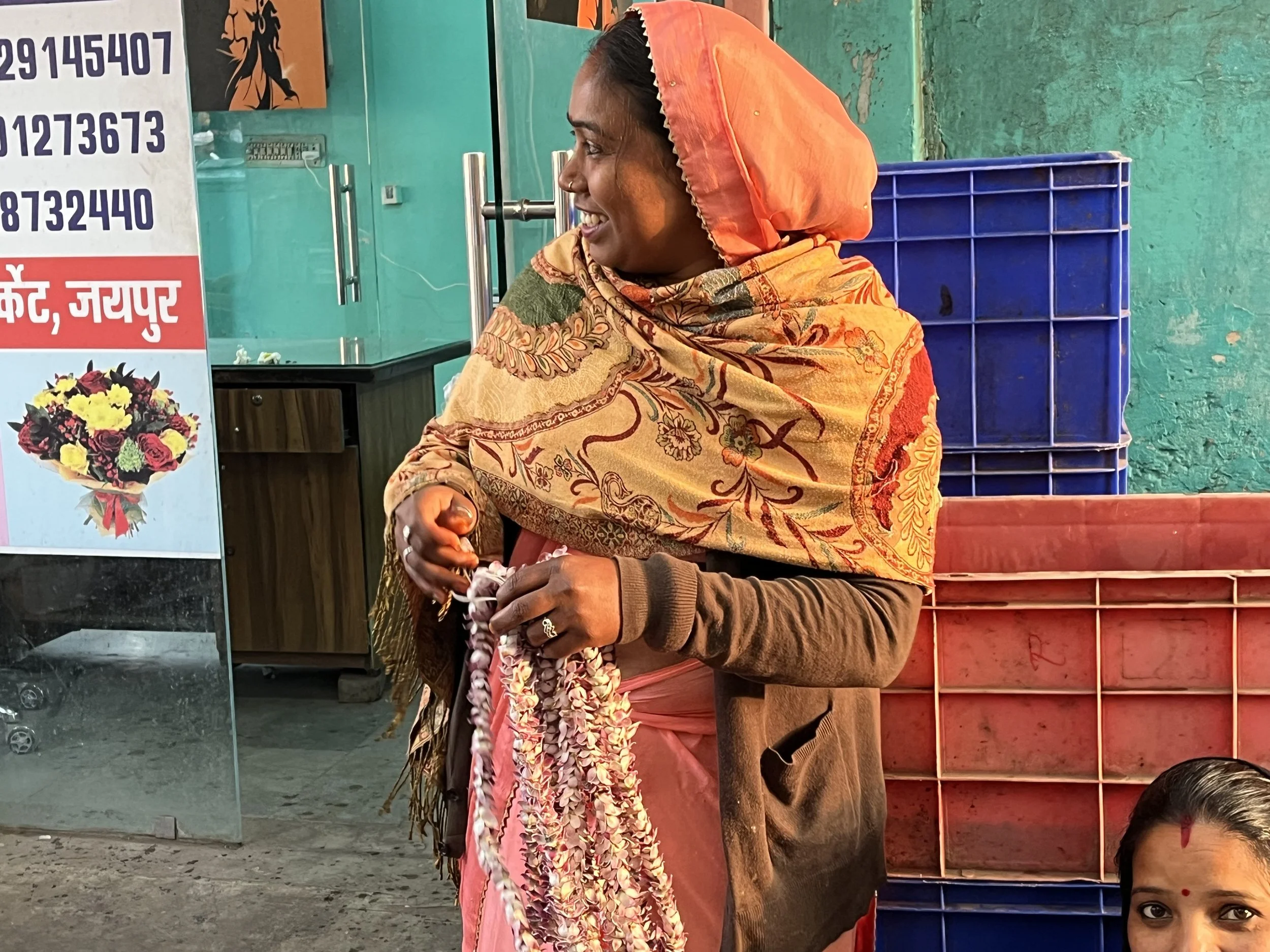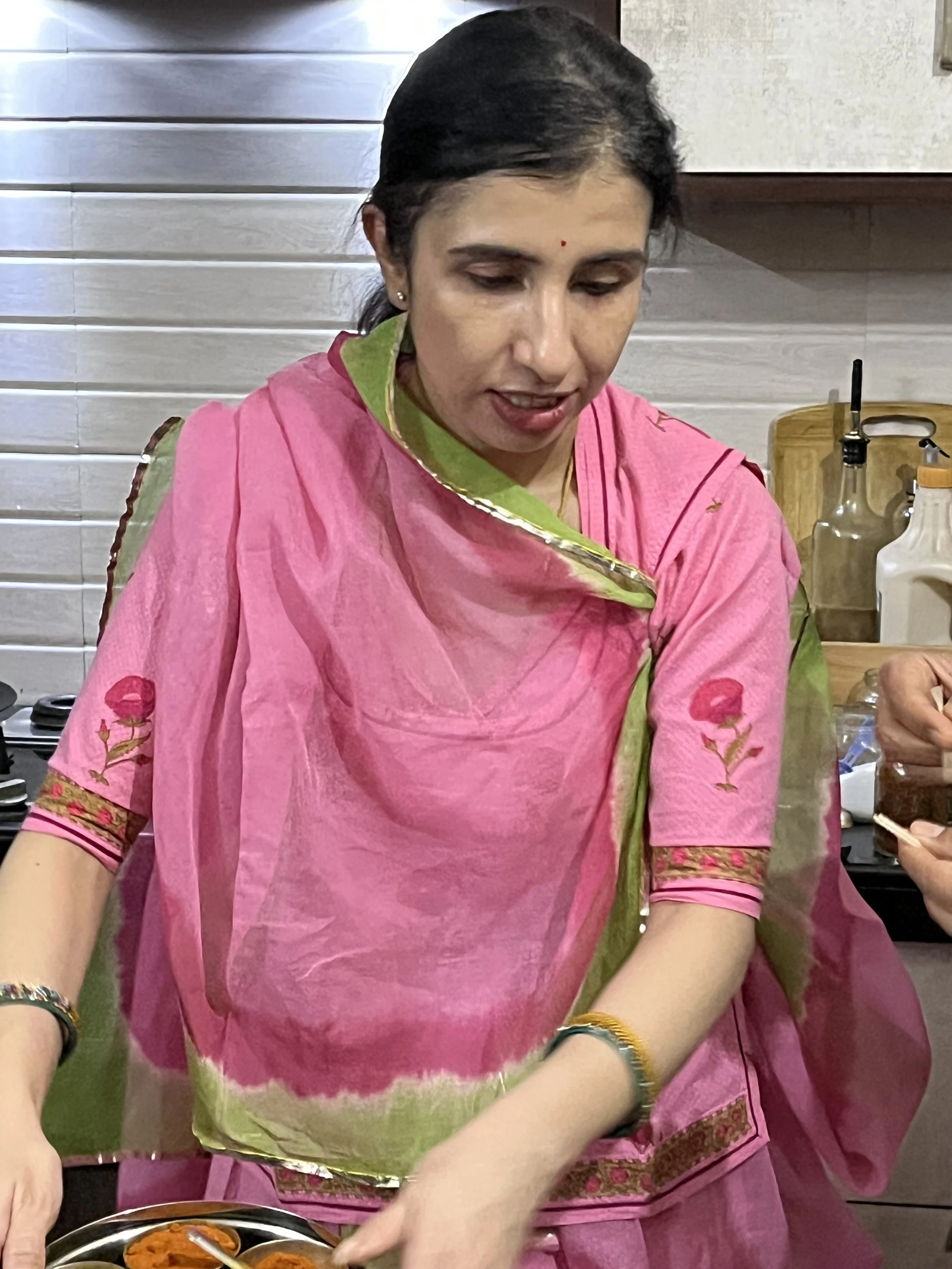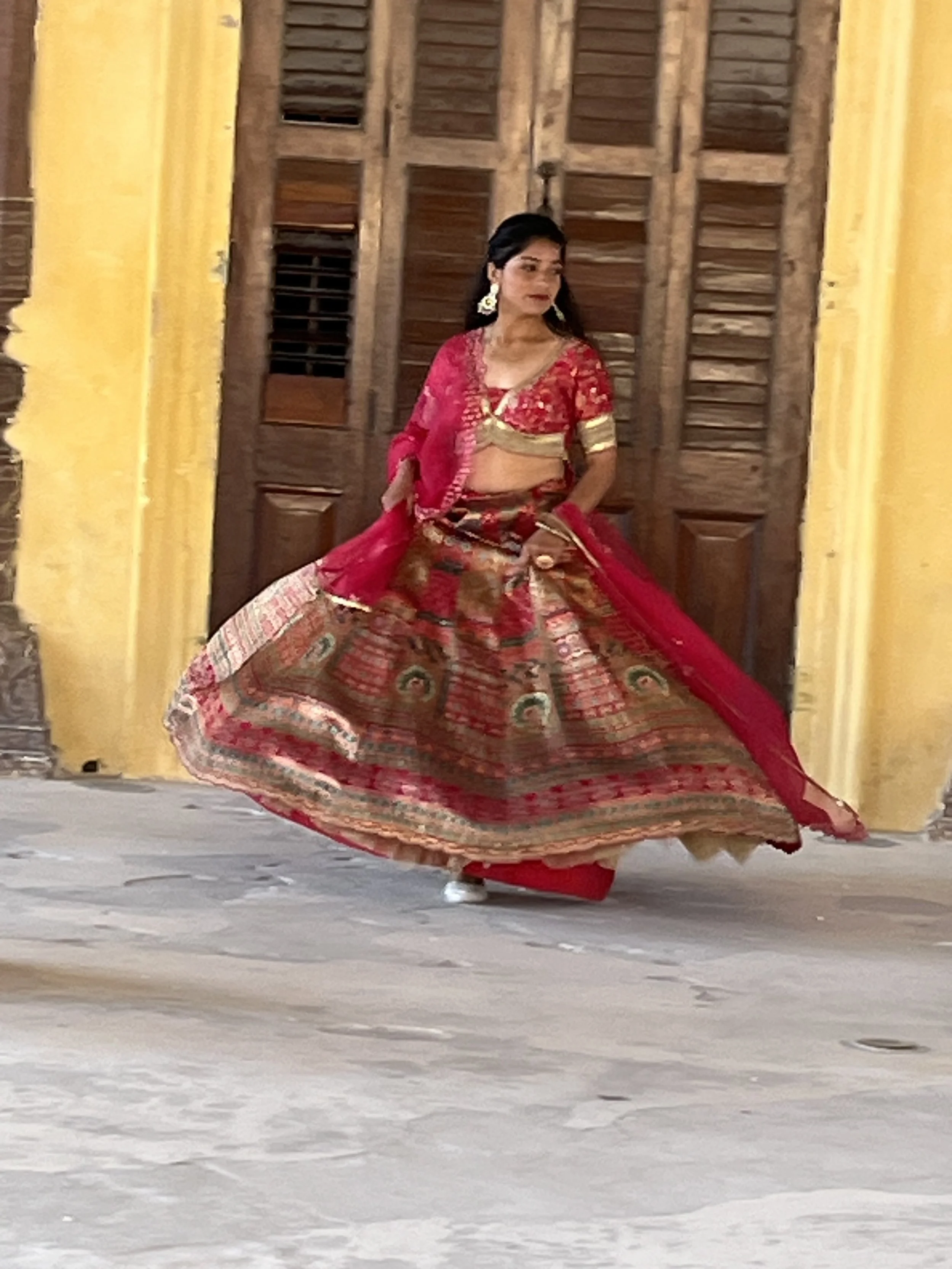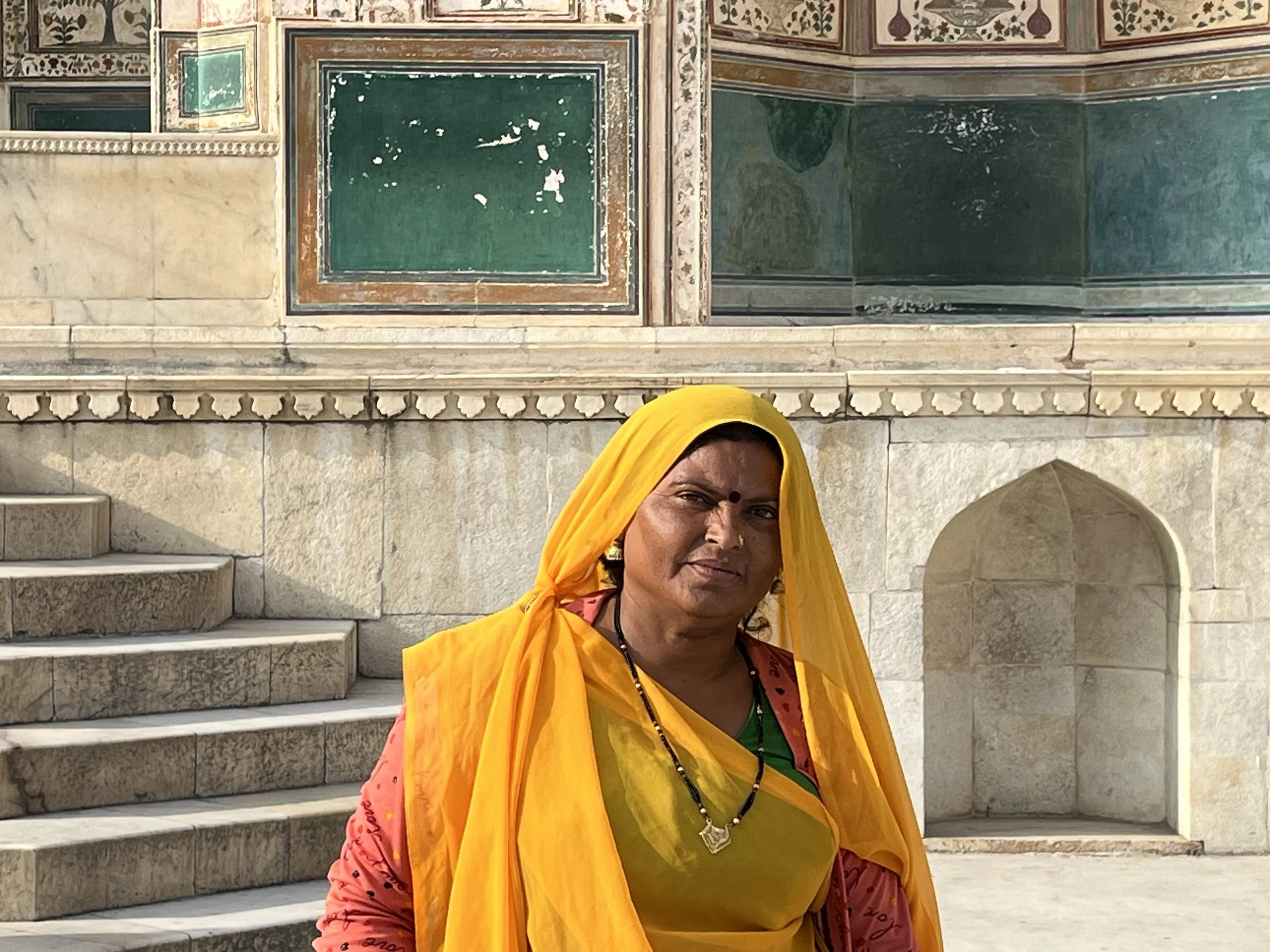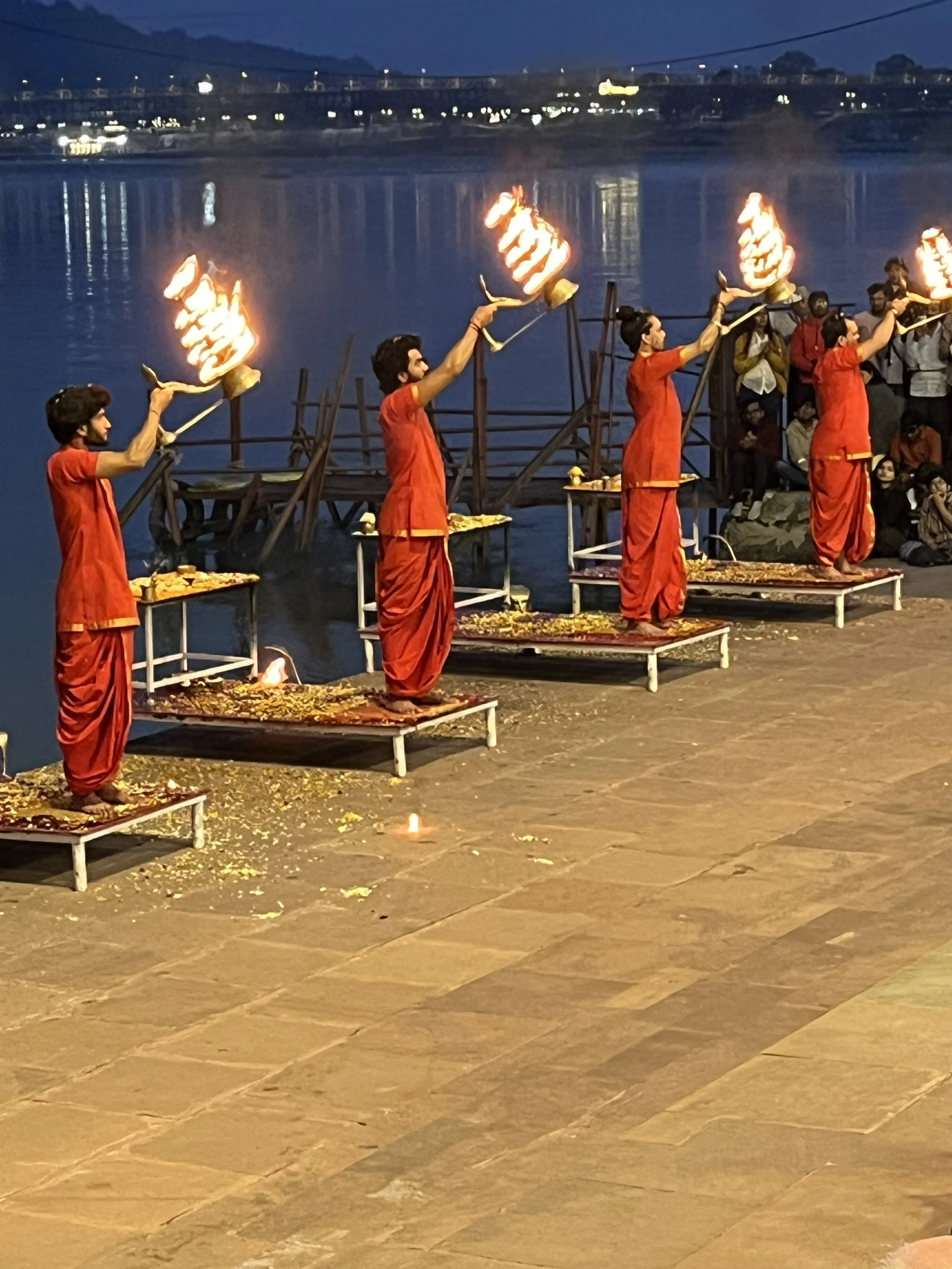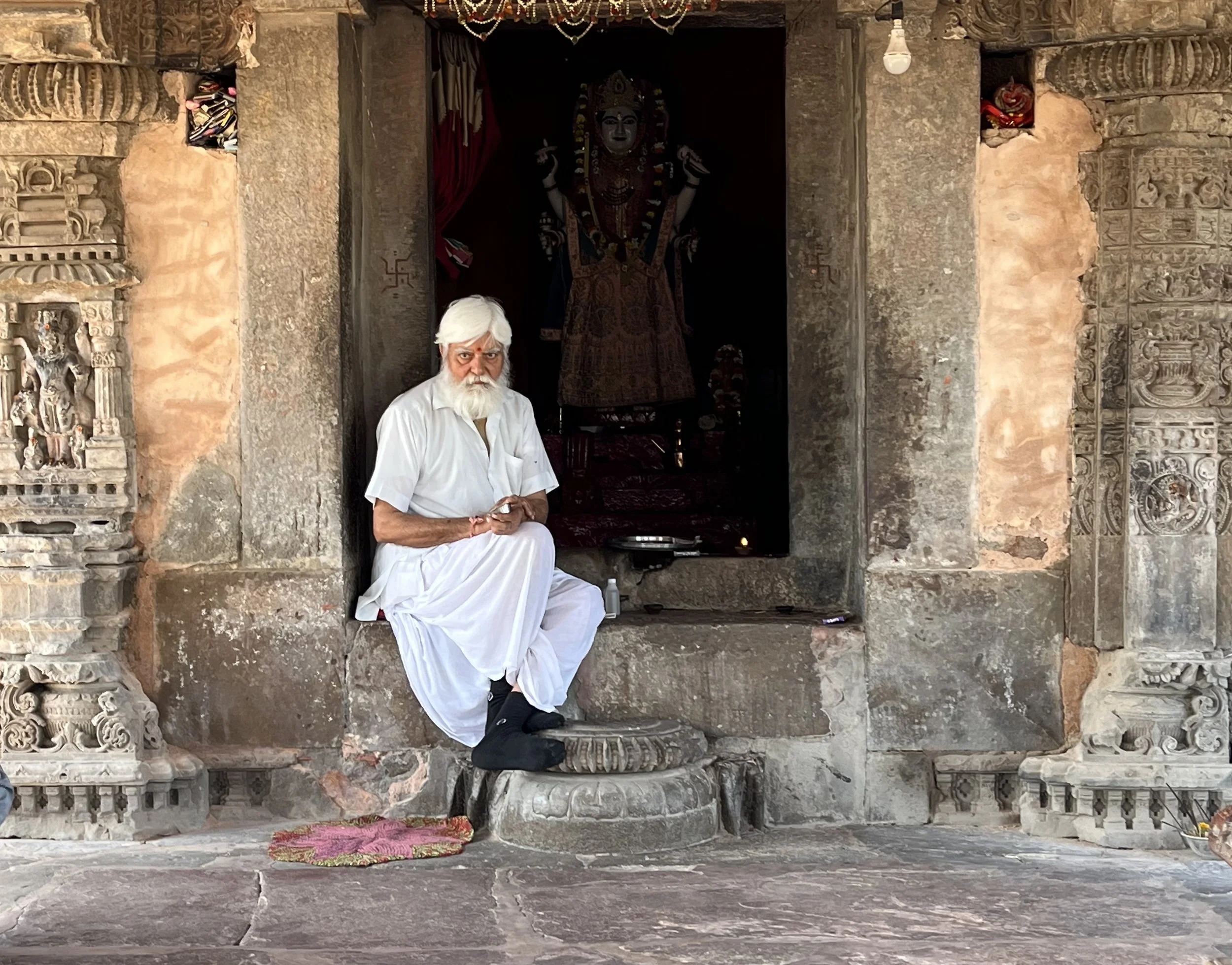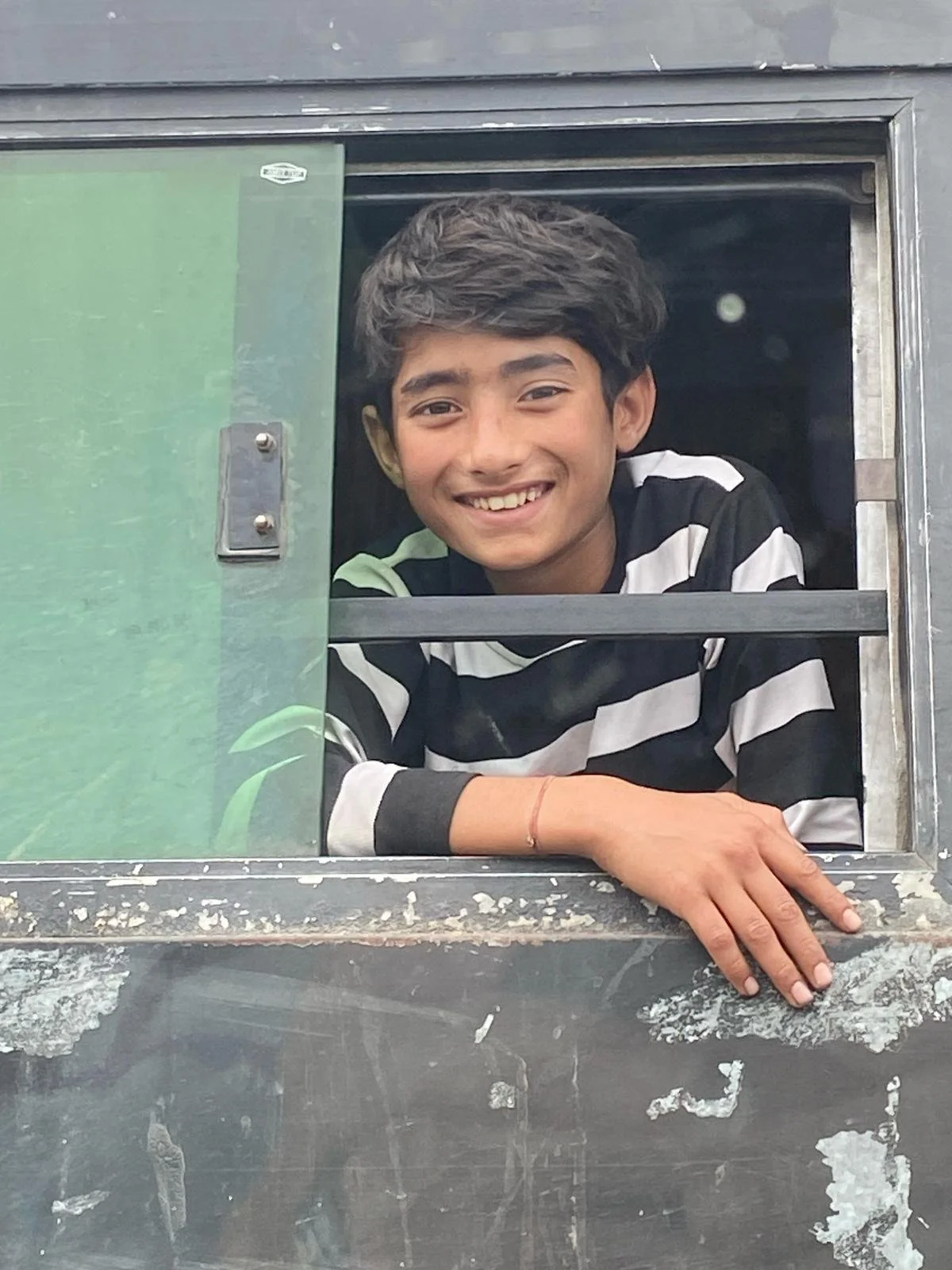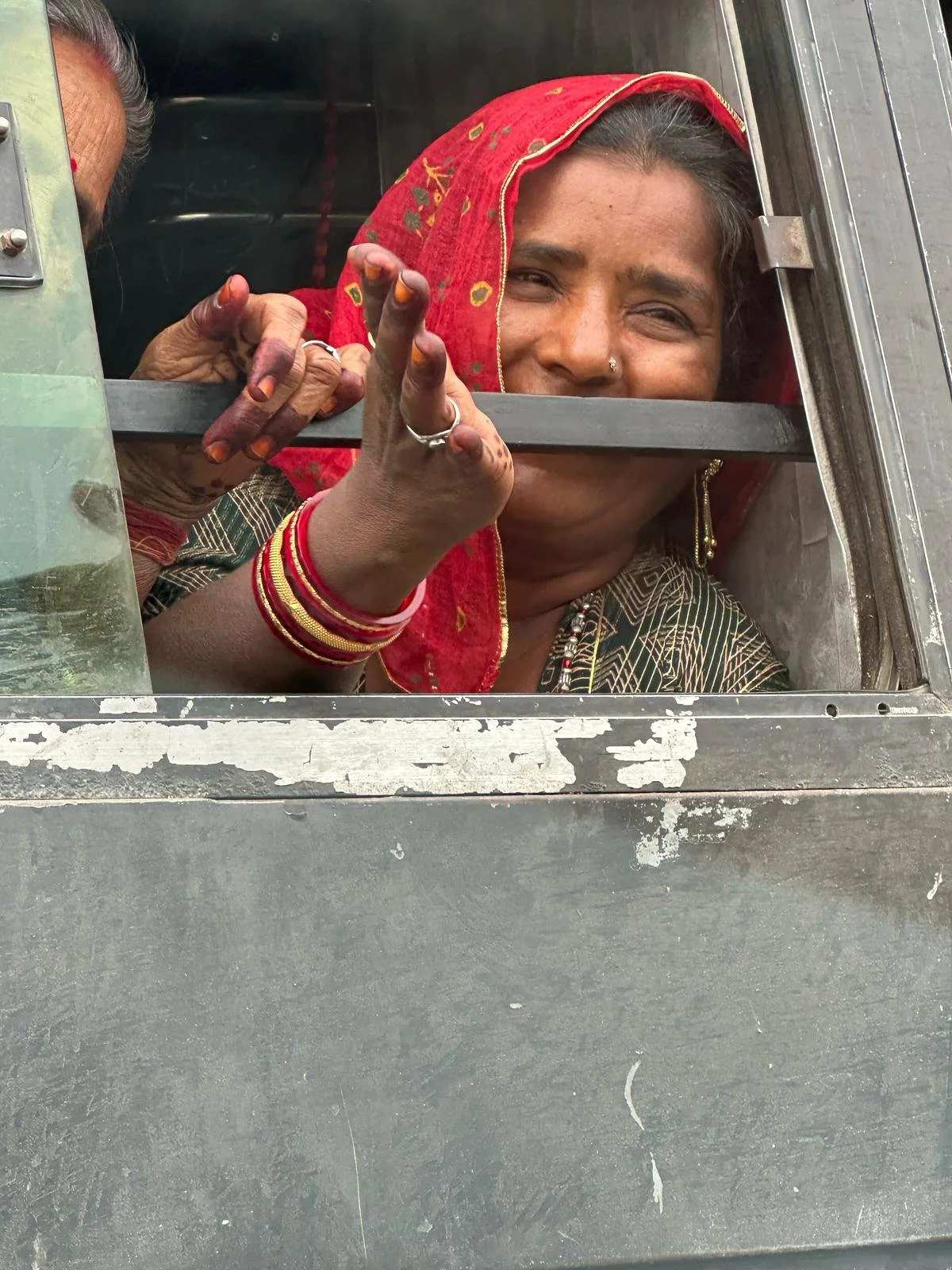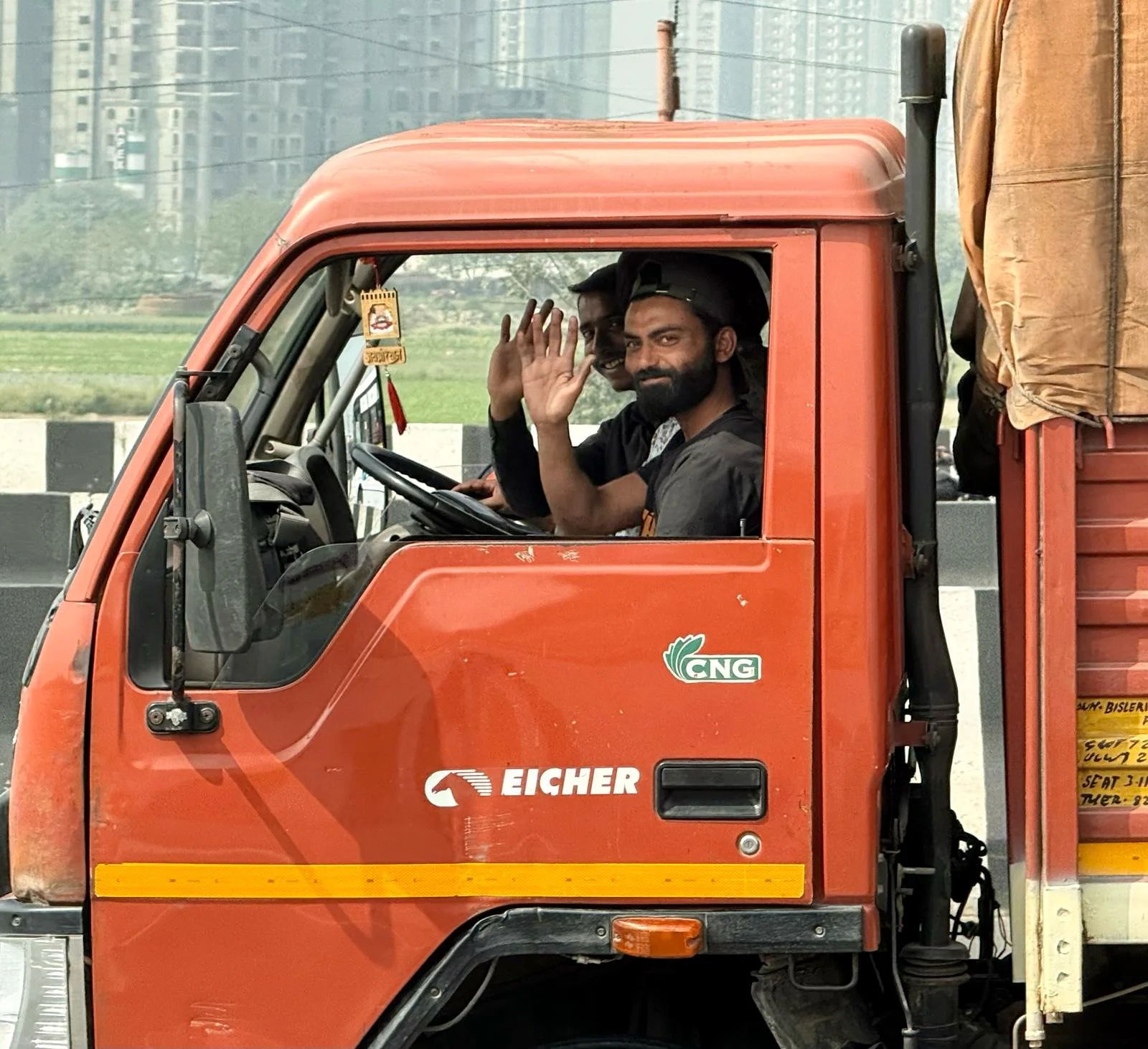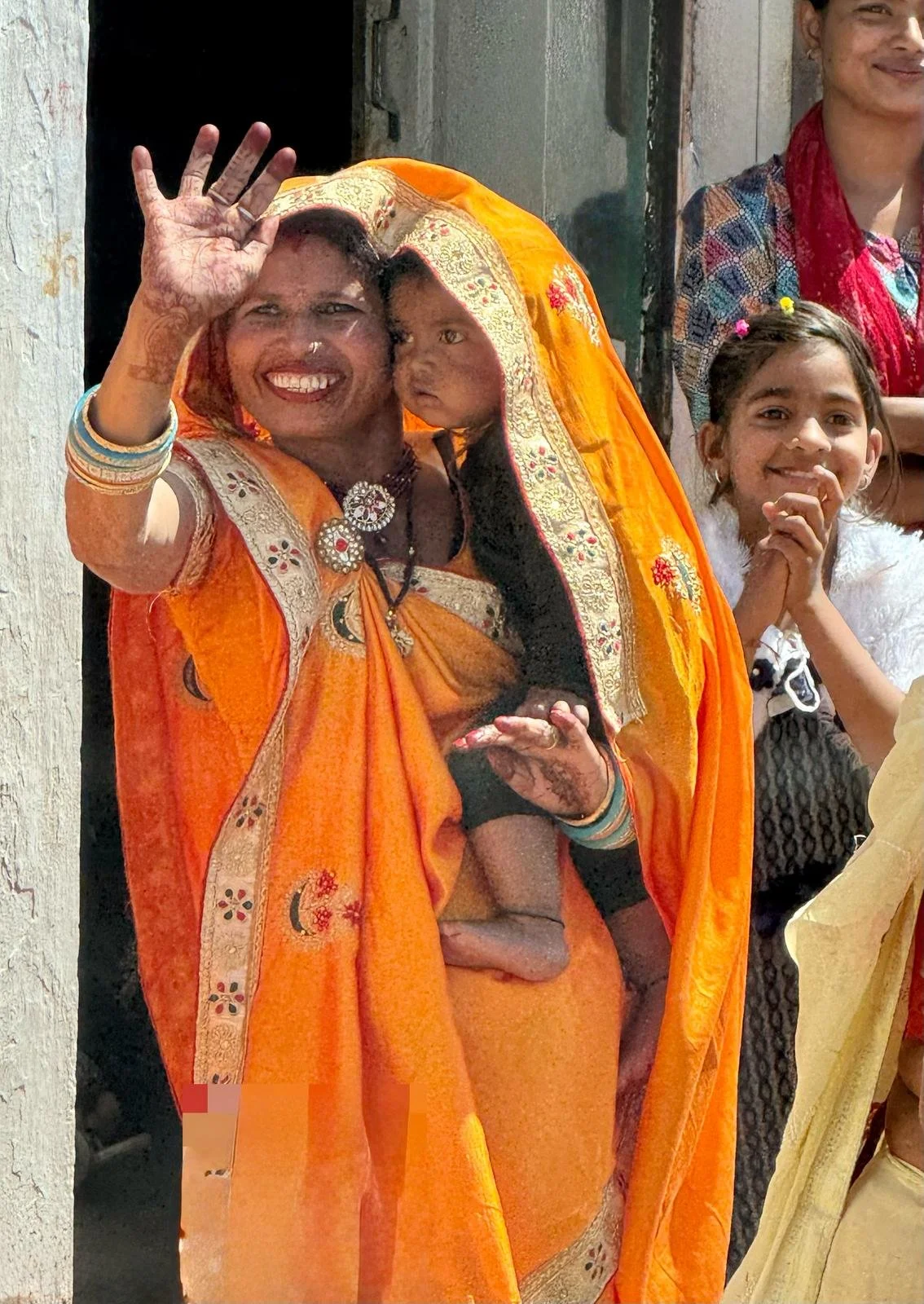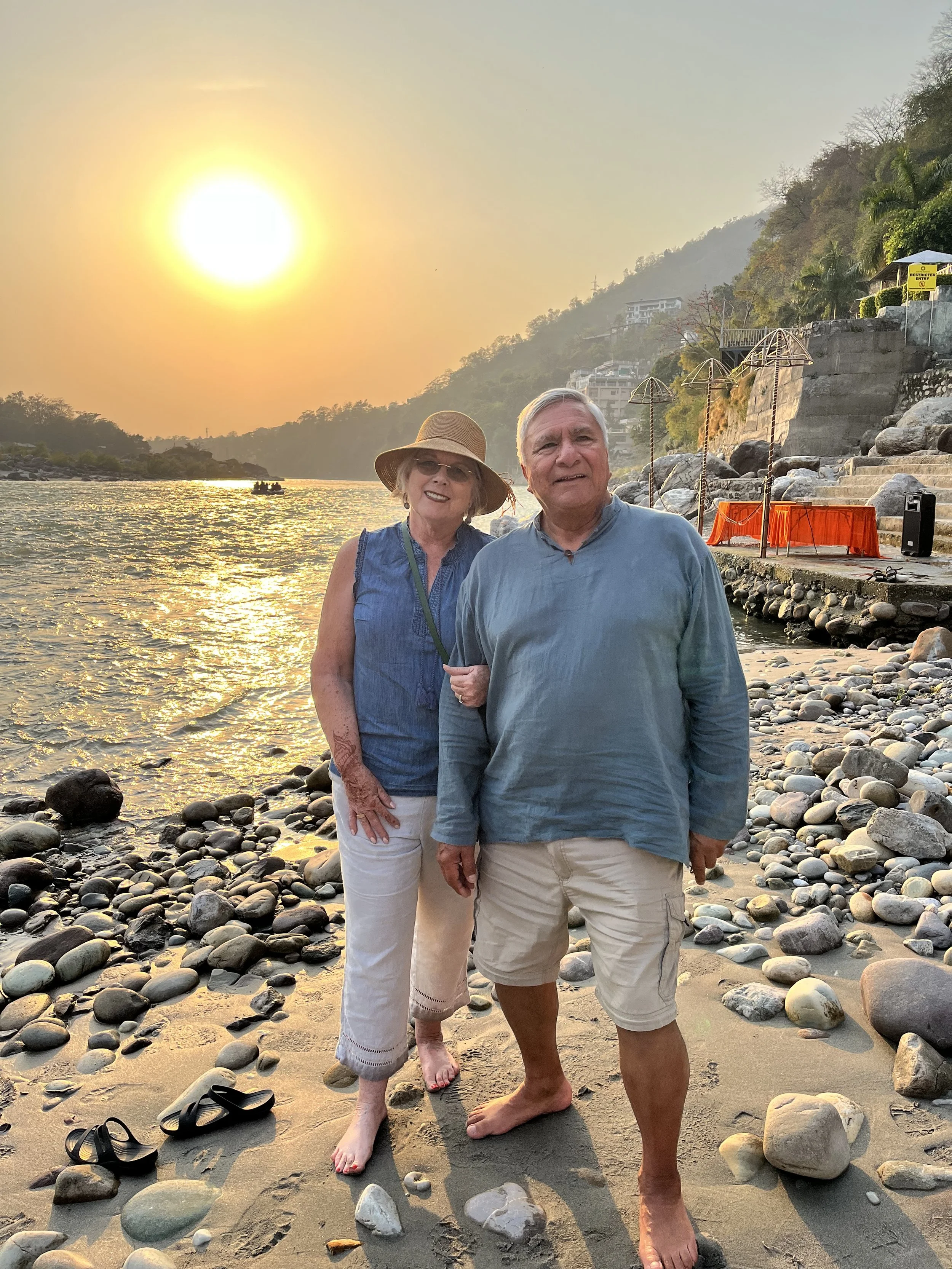Travel to INDIA
Recent trip to INDIA - February 2025
The pale morning sun peaks down a street in the pink city of Jaipur lighting the road for the revered cows. It’s time for first-morning feeding. They nose their way into a community-provided breakfast of fresh green alfalfa. Reverence for cows is deeply embedded in Indian traditions, festivals, and rituals. As a result, the cows stand slowly chewing their cud by the side of the busy road with no fear of stick, or prod, or horn.
There are a great many third-world issues—besides the inescapable cows—one must see past, to appreciate the charm of India. Learning about it’s history helped. From what I understand from Sameer our tour director is that the government is a relative newcomer on the world stage. In 1947 India gained their sovereignty from British rule with the help of Civil Rights Activists like Mahatma Gandhi and Jawaharlal Nehru. When Gandhi was assassinated the following year 1948 after negotiating Indian Independence it took time to morn the activist and implement a fledgling government.
Mahatma Gandhi
Sameer, likened their current country status to the USA in the 1970’s. Whether by suggestion or by reality, I could see the similarities. With the largest population in the world, (1.46 billion people) their overpopulated cities sprawl, untethered. This disproportionate population and prior lack of education have affected their current living conditions. Now, the Prime Minister Narendra Modi has made headway to improve the quality of life and give his people access to clean water and electricity through major environmental initiatives like Green India is a Clean India.
Riding in a tuk-tuk in India is almost indescribable. I can say with certainly that it is memorable. Imagine a real time, scariest, carnival ride you’ve ever been on… now remove the safety bars. You circle roundabouts, dodging cows, buses, cars, all at full speed, horns blaring. “Get your hand in,” yells a fellow passenger as a truck squeezes by you on the left. Are we on two wheels? You glance at the tailgate. Blow Your Horn is written in big red letters on the back. I don’t think anyone need to be reminded of that. A photo-op, you ask? An excellent picture, sure, but there is no way to let go—to take the shot before you careen off down a side street, hurtling to your destination.
“Where are we?” You laugh, rattled, amused, and dizzy. The cart stops. Praying you have arrived, you take the first step out of the vehicle, then leap out of the way of a motorcycle flying by. You wonder, Is it safer in or out of the tuk-tuk.
“Sticky-rice sticky-rice,” yells, Sameer. That means no chatting, no catching your breath, no taking in your surroundings, and for safety’s sake, you must stick together. We scurry like mice, heads up, alert, nose twitching, we follow.
There is much to experience on the other side the third world facade: a gate, a wall, or down an unremarkable ally. It is as if by magic we find an ornate shrine, lush garden, or ancient ruin. The cacophony of the outside world is forgotten for the moment while we walk paths well-worn by centuries of wanderers. We marvel at the ancient statues and architecture now occupied by songbirds.
Nazir ka Bagh
I recall in 2009, I visited India with my cousin, and her parents. I remember how tears came to my eyes when I first came around the corner and saw the Taj Mahal. The iconic white marble tomb, built in remembrance of his true love by the Mughal Emperor Shah Jahan stood glowing in the distance. It was surrounded by flowers and fountains at sunset. It doesn’t matter what time you visit it is always beautiful. I visualized a radiant halo surrounding it, as I wandered barefoot in the enchanting allure of the magic that is the Taj Mahal. I deeply admired the verses of the Quran in black marble calligraphy that surrounded the entry’s, and wished I could read the words, which were sure to be poetic. The precious and semi-precious inlayed stone flowers reflected the purple, orange and green colors offsetting the translucent white walls.
Daniel at the Taj Mahal 2025
Today’s visit was a bit different. For one we wear booties, and there are more restrictions. Some areas are closed or access is denied. Sameer tells us that there may be more controls in the future as historians are worried about the wear and tear of the thousands of daily visits. I’m happy I have the privilege of experiencing this magical place twice.
O Soul, thou art at rest. Return to the Lord at peace with Him, and He at peace with you.
Another otherworldly temple is in Amritsar, where we dare to reflect on the beauty of a mirage-like golden palace built in 1604. I find this place to be even more impressive than the Taj Mahal. The Golden Palace is the temple of temples made of gold plate, surrounded by a lake filled with holy water. It shimmers in the evening of the setting sun. People come here to be blessed, healed, and to break bread. Located near the Pakistani border it is the center of Sikhism. In separate chambers, many sit on the floor in the communal soup kitchen, where neighbors sit next to neighbors and enjoy a meal; 50,000 to 100,000 people are fed daily by volunteers, regardless of religion, caste, or background. The temple is dedicated to peace, devotion, humility, and humanity.
The Golden Temple Amrit Samovar
Largest Soup Kitchen in the World
Amritsar
The people are beautiful too, literally and figuratively. Women are adorned in multicolored silk tunics and salwar kameez, ( a long tunic, paired with pants), and sari’s which are jewel-like adorn the landscape with a kaleidoscope of color. The women are a bright spot while making chapati in a communal kitchen, tending the fields, or selling vegetables at the market. In every direction, they paint a vision. Unaware of their beauty, they grace the everyday scenes and make the mundane bright with color.
A common theme that runs through India is embodied by the major river in northern India, the Mother River Ganga. The river is revered in Hinduism for its capacity to purify and heal the body. Spiritual ceremonies such as the Aarti are performed by priests with oil lamps and ancient choreography along the banks of the river. Sacred offerings of oils and flowers are given as tokens of devotion. They help unite with the spirit, and cleanse one’s transgressions. I experienced this healing on my first trip as I was suffering the aftereffects of chemotherapy. Attending the Aarti ceremony on the Mother Ganga in the Holy City of Varanasi was a turning point for me. My symptoms at the time, improved greatly after attending these ceremonies.
Mother River Ganga and Aarti Ceremony
There is an appreciable harmony throughout the country. Despite the chaos, there is little adversity and few accidents. I see no one yelling or waving their arms in anger. (It is clear we are not in Italy.) While we walk through markets, parks, streets, and shopping centers, we witness no arguments, or see mothers scold their children, and rarely I hear a child cry.
Dausa Bandikui
India is a friendly place. Men and women of all ages wave and smile at us. Many stop to talk and take our pictures, and we take theirs. One woman in a double-decker bus pantomimes, “I love you,” as we pass by. They share their innocence and innate happiness. I will remember all the wonderful people we met on our trip The humanity and spirituality of the Indian people will remain with me forever when I think of this beautiful country and its traditions!
On the edge of the Mother River Ganga!
